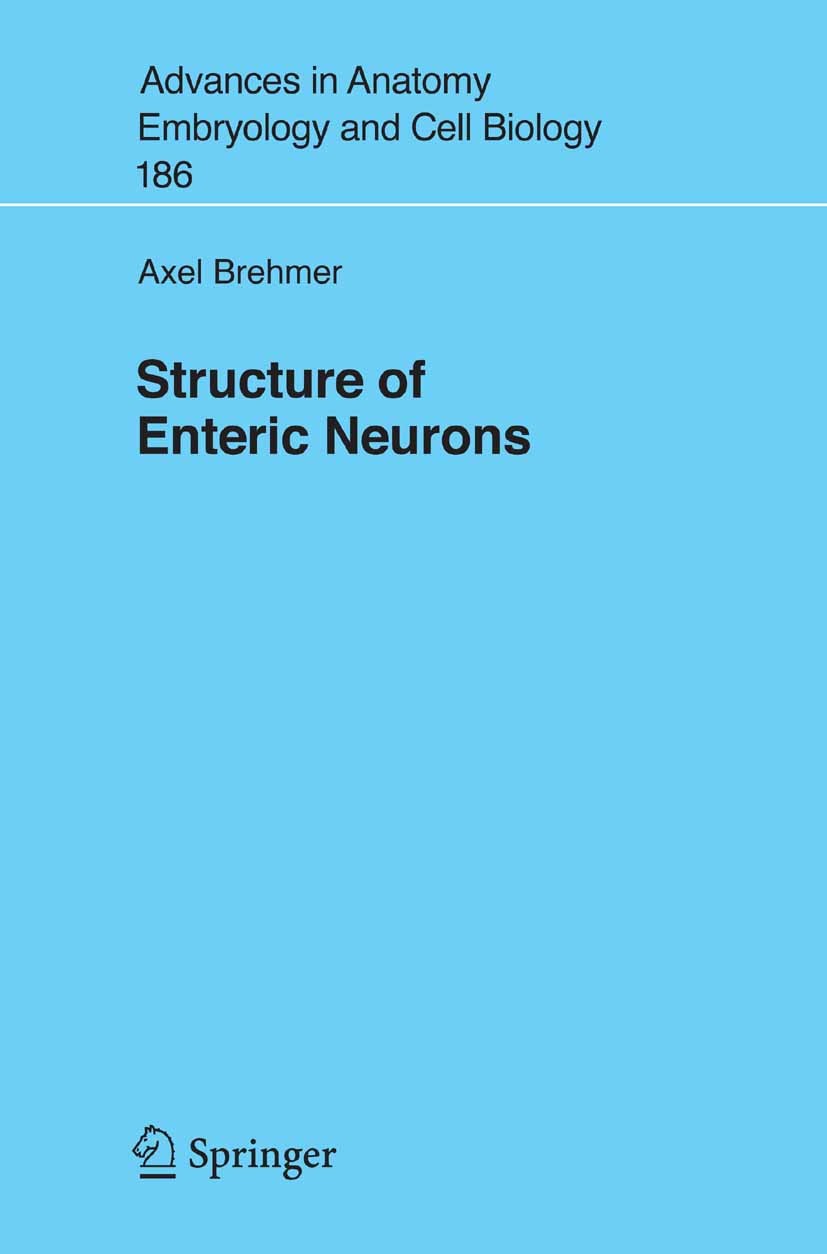| 书目名称 | Structure of Enteric Neurons | | 编辑 | Axel Brehmer | | 视频video | http://file.papertrans.cn/881/880259/880259.mp4 | | 概述 | Includes supplementary material: | | 丛书名称 | Advances in Anatomy, Embryology and Cell Biology | | 图书封面 |  | | 描述 | 1 Introduction The plexuses of Auerbach and Meissner are peculiar to the gut; they extend from the beginning of the unstriated portion of the oesophagus to the end of the rectum. They have usually been considered to belong to the sympathetic system, but it appears to me preferable to place them in a class by themselves. We may speak of them as forming the enteric nervous system. (Langley 1900) In this context,itislessimportant that Langleyexcludedthe striated part of the oesophagus from his de?nition of the enteric nervous system (ENS). Much more remarkable seems to be that for Langley, a physiologist, structural reasons were the most decisive for taking the nervous system within the wall of the gastrointestinal tract as an entity unto itself. On the one hand, he argued that enteric nerve cells differ in their histological character from those in para- and prevertebral ganglia. On the other hand, there were few connections of enteric nerve plexuses with the central nervous system (CNS) through sympathetic or other autonomic nerves (which had already been described, however; Auerbach 1862). In his later, more famous monograph, he divided the autonomic nerves into three groups: sympa | | 出版日期 | Book 2006 | | 关键词 | Dogiel‘s classification; Stach‘s classification; effector neurons; enteric nervous system; gut diseases; | | 版次 | 1 | | doi | https://doi.org/10.1007/3-540-32874-2 | | isbn_softcover | 978-3-540-32871-1 | | isbn_ebook | 978-3-540-32874-2Series ISSN 0301-5556 Series E-ISSN 2192-7065 | | issn_series | 0301-5556 | | copyright | The Editor(s) (if applicable) and The Author(s), under exclusive license to Springer-Verlag GmbH, DE |
The information of publication is updating

|
|
 |Archiver|手机版|小黑屋|
派博传思国际
( 京公网安备110108008328)
GMT+8, 2025-12-14 12:37
|Archiver|手机版|小黑屋|
派博传思国际
( 京公网安备110108008328)
GMT+8, 2025-12-14 12:37


